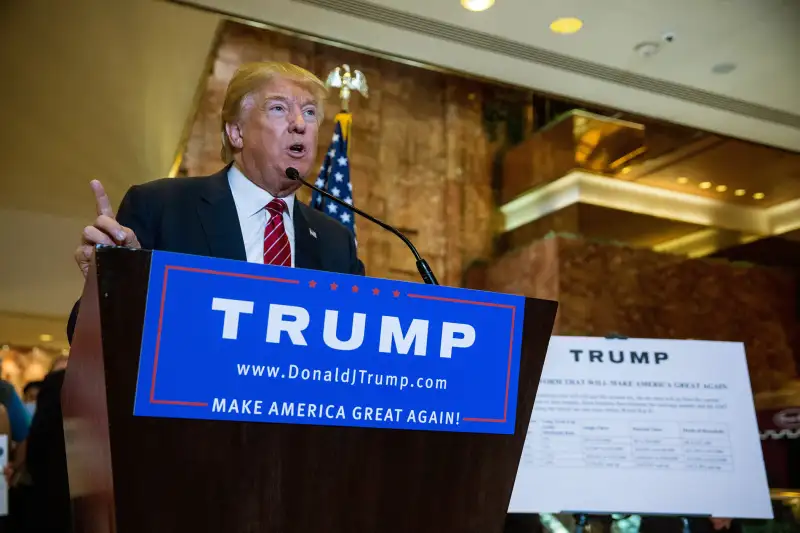Here's Who Really Wins Donald Trump's 'I Win' Tax Plan

GOP presidential hopeful Donald Trump released his tax plan Monday. His remarks emphasized that under his plan, more than half of Americans would pay no taxes. He also said high-income Americans, including "hedge fund folks," would lose some tax breaks. However, those same high earners would also enjoy a very steep reduction in their income tax rates.
Speaking from the Trump Tower in New York City, Trump said that he would simplify the federal tax plan from its current seven brackets to four: 0%, 10%, 20% and 25%.
The 25% rate for higher earners compares to a top marginal rate today of 39.6% (plus Medicare surtaxes).
The 0% rate would apply to earnings under $25,000 for singles and $50,000 for couples.
Americans earning less than that amount will "get a new one-page form to send the IRS saying, 'I win,'" according to the Trump campaign's position paper.
More than 60 million U.S. households would fall into this 0% tax tier. But it's already the case that about 40% of taxpayers owe no federal income tax, after accounting for various deductions, exemptions, and credits. (Those who work still pay Social Security and Medicare taxes, which are separate from income taxes and in fact make up the bulk of annual federal tax payments for the majority of Americans.)
On the opposite end of the economic spectrum, Trump's tax plan appears to offer a major tax cut—although this will depend on specifics Trump's plan does not detail. In addition to the lowering of the top rate, Trump's plan also eliminates the estate tax. And it cuts the income tax rate paid by corporations and many businesses.
The tax cuts will be paid for by closing or eliminating other tax advantages enjoyed by high earners and corporations, Trump says, so that they won't add to the deficit. For example, Trump proposes a quicker phasing out of the personal exemptions and itemized deductions available to individuals as their incomes rise. He also calls for measures to capture more of the income U.S. corporations earn overseas.
Like his GOP rival Jeb Bush, Trump targets the "carried interest" tax break enjoyed by some hedge fund managers. Under carried-interest rules, a money manager can pay the capital gains rate—which currently tops out at 23.8%—on certain earnings, rather than the income tax rate of up to 39.6%. However, since Trump intends to lower the top income rate to 25%—just 1.2% higher than the current capital gains rate—the net effect of this is smaller than it appears.
And under Trump's plan, hedge fund managers would also get a tax cut on any of their earnings already being taxed as income.
So maybe hedge fund managers should get that "I win" letter too.